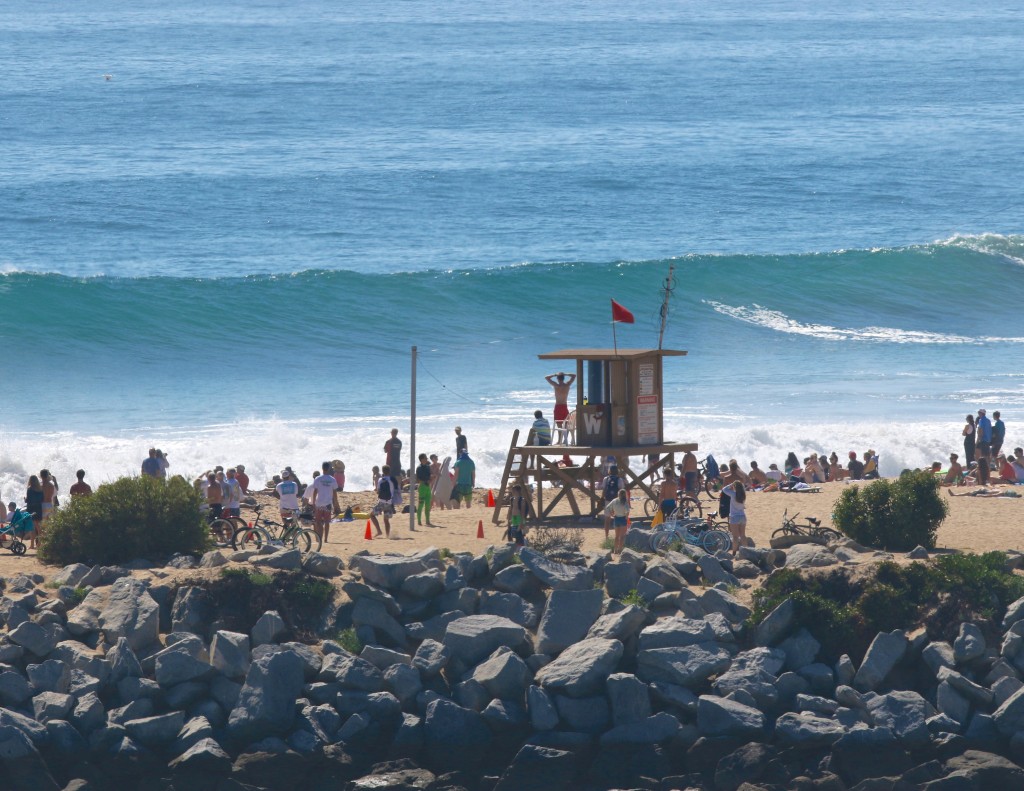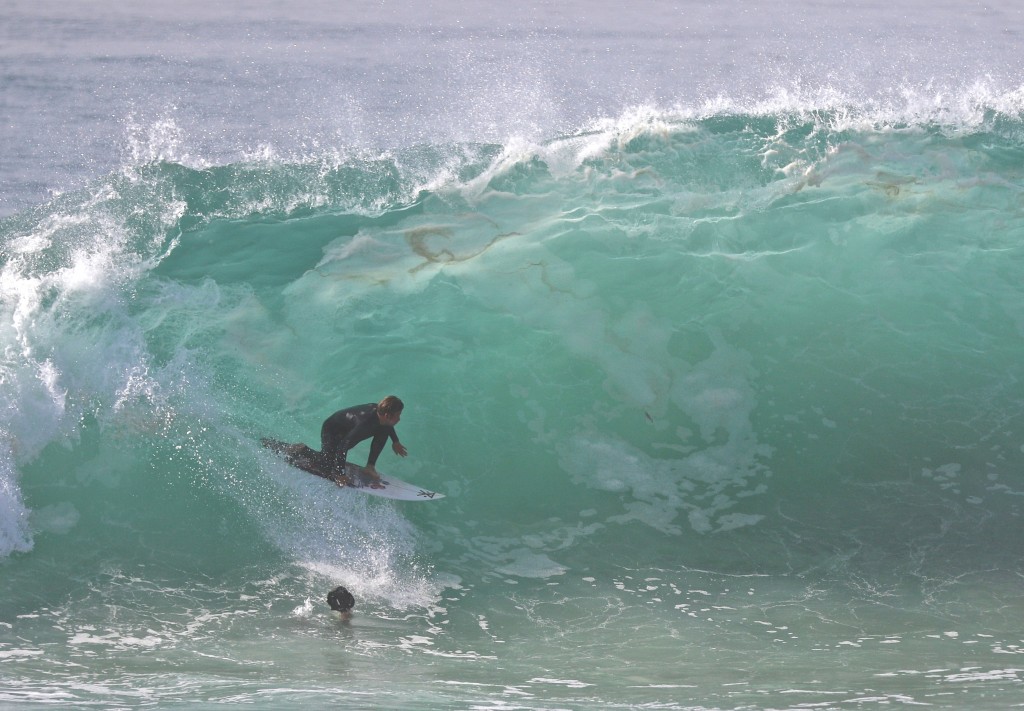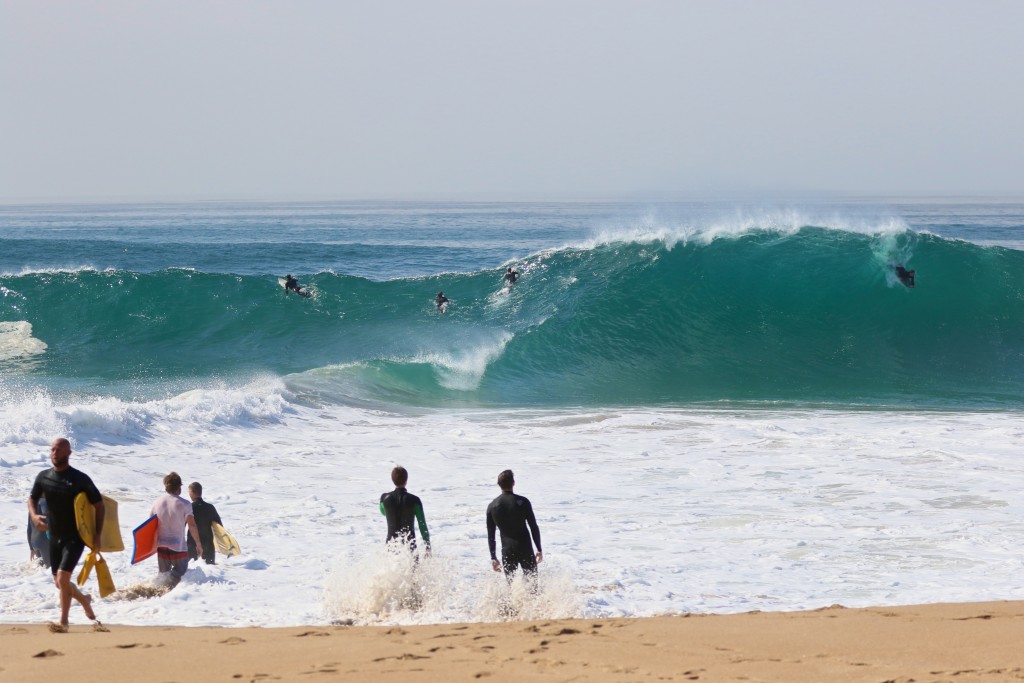By Riley Keating | NB Indy

— Photo by Jim Collins ©
The world needs balance.
One recipe might suggest a healthy amount of happiness, a little sadness, a hint of sorrow, and finally an abundant dose of normality.
But the world also needs some crazy — not to be out-casted, but to simply be different. Proud to be cut from a different cloth, reveling in every quirk that distinguishes them as an individual, never caring how that quirk may alter another’s perception of them. They act as they will because they want to.
Fortunately, these people have a home. Nowhere matches their abnormalities better and manages to deter normal folk quicker than Newport Beach’s infamous monstrosity, the Wedge.
The legal court documents for the 1975 legal case Virgil vs. Time, Inc. states that the Wedge is “reputed to be the world’s most dangerous site for body surfing.”
The case involved some local Newport body surfers demonstrating their right to privacy when pictures were taken with revoked consent for a 1972 Sport’s Illustrated article about the Wedge, titled “The Closest Thing to Being Born” (a telling title by itself).

— Photo by Jim Collins ©
In order to truly visualize the deformed nature of this break, one must grasp the science behind the phenomena.
The “Encyclopedia of Surfing” breaks down the Wedge nicely.
“The Wedge is a classic ‘rebound’ wave: each incoming swell pushes against the jetty rocks and rolls back as a refractory wave, which then vectors against the following swell, effectively doubling the wave’s height and power, and giving it a distinctive A-line ‘wedge’ shape.”
Essentially, the sea floor transitions from deep to really shallow in a matter of yards, so the energy, travelling for thousands of miles only to reach its abnormal destination, suddenly compresses and radically pushes water up to form the wave in all its punishing glory.
Beachgoers flock to the Wedge on big swells to spectate, but the wave has not always had the crazy shape that named the spot.
As highlighted in the 2014 documentary “The Wedge: Dynasty, Tragedy, Legacy,” the once-vulnerable harbor experienced tragedy for boats and swimmers exposed to the wrath of the relentless Pacific Ocean.
After his oldest son died in the notoriously dangerous Newport Harbor mouth in 1926, George Rogers spent 10 years and the resources from his Union Rock empire to permanently make the harbor entrance safer by extending the West Newport Jetty; consequently, the jetty squandered North America’s greatest surf spot, Newport Harbor. They tried to tame the wildest waves; instead, they were contained.
Fred Simpson managed to tame the caged beasts as well as any. Known as “The Pope of the Wedge,” Simpson pioneered his extended arm “outrigger” position (called “the Fred”) as he precisely maneuvered deep tubes by himself in the 1960s and early 70s, alone in the water.
Simpson also holds special importance for Newport as he created the Vipers, the first fins with built-in skegs for increased control on a wave, which were iconic for body surfers at the Wedge decades ago and are still popular today.
Crowds have gathered during countless summers to witness people riding the freak spectacle from the perceived safety of the beach. Due to the direction the beach faces, the break only picks up big south/southwest swells, which happens from late spring to early fall.
For safety reasons, the blackball flag is hoisted and a restriction is placed on boards from 10 a.m. to 5 p.m. during summer months (officially May 1 – October 31) as a way to prevent collisions.

— Photo by Jim Collins ©
As a result, surfers, body boarders, and skimboarders must refrain from water use while body surfers enjoy a lineup untainted by boards.
Since the 60s, the Wedge’s gaping tubes inspire those lucky enough to experience its power. Dick Dale captured the intensity with his 1963 high-energy surf guitar song called “The Wedge,” written after the years he lived in front of the break.
Only one body surfing spot earns a coveted spot in Bruce Brown’s “The Endless Summer” film on their timeless quest for the perfect wave. Brown gives some classic commentary that demonstrates the unchanged charm of the “dirty ol’ Wedge.”
No sugar coating necessary, the official newportwedge.org website provides web surfers with a glimpse of the scene.
Everyone needs a home. The waters trapped by the West Newport Jetty feel lonely without those banshees hollering as they skip down the face of a 18-foot mountain, awaiting the inevitable explosion of the lip pile-driving the helpless lunatics into sand only a few inches below the surface; just like those at the mercy of the ocean feel they can only express their true soul at this place.
That’s why the world needs the Wedge.




